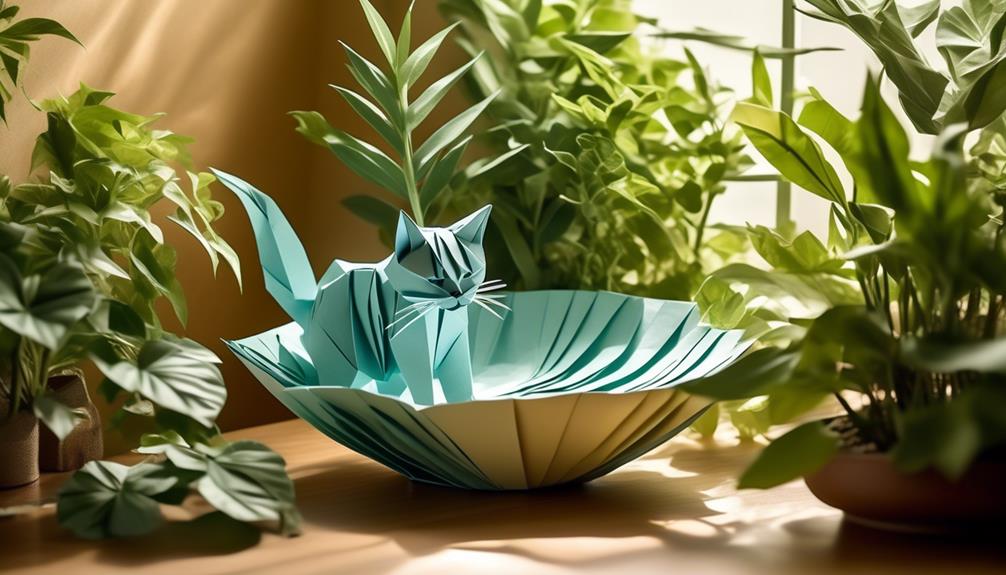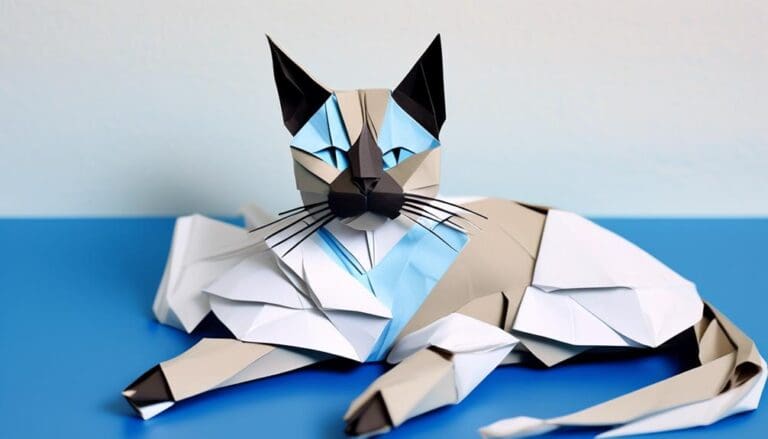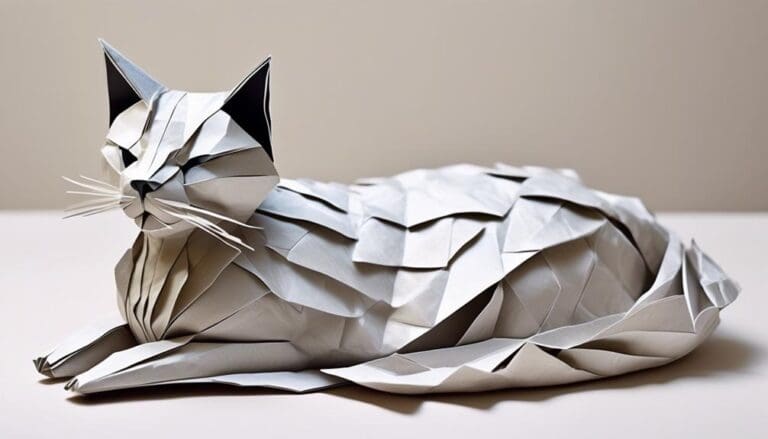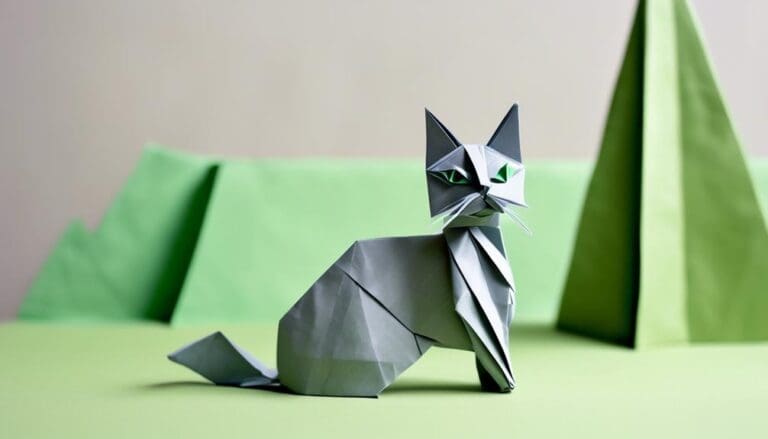As you watch your elderly cat bask in the afternoon sun, you can’t help but notice the grace and wisdom in their every move. You know that as they age, maintaining their hydration becomes more than just a routine; it’s an act of love and a pivotal aspect of their health.
You’re already doing so much, from ensuring their water bowl is always full to offering them a variety of wet foods, but you wonder if there’s more that can be done. You’re not alone in this; many pet owners seek the best ways to prevent dehydration in their senior cat, understanding the delicate balance required to keep them at their best.
You’ve adjusted their diets based on observation, but you want to stay updated on ensuring your cat stays hydrated. You aim to learn about the signs of dehydration and new strategies to keep them healthy and comfortable in their old age.
Key Takeaways
- Recognizing dehydration symptoms in elderly cats is important, including a noticeable dip in energy, panting, refusal to eat, sunken eyes, and tacky and dry gums.
- Providing plentiful and easily accessible water sources, such as multiple water bowls, a cat water fountain, and an electrolyte supplement, can help prevent dehydration in elderly cats.
- Encouraging increased fluid intake by enhancing the flavor of water with broth or tuna juice, introducing a cat water fountain, and including ice cubes in water bowls can also help prevent dehydration.
- Feeding wet food to elderly cats is important as it contains high water content, reduces reliance on drinking water, helps maintain a healthy water balance, and plays a key role in preventing dehydration in older cats.
Recognizing Dehydration Symptoms
When caring for your elderly cat, it’s important to recognize the subtle yet serious signs of dehydration, such as a noticeable dip in energy or panting, which could signal their body’s plea for hydration. Dehydration in your cat isn’t always obvious, yet it’s a common condition that can have serious repercussions if left unchecked.
You know that recognizing dehydration symptoms early can be lifesaving. Watch for common symptoms of dehydration like your cat refusing to eat or displaying sunken eyes, which reflect the concerning level of their body’s moisture loss. Touch their gums; if they feel tacky and dry, this is another red flag.
Skin elasticity is another telltale sign. Gently pinch the skin on your cat’s back. If it doesn’t quickly return to its original position, this indicates a loss of hydration and skin turgor.
If you notice any of these signs of dehydration, don’t hesitate. Severe dehydration is an emergency that requires immediate attention. Contact your veterinarian right away. They’ll provide the necessary care to rehydrate your beloved pet and address any underlying causes. Your vigilance and prompt action are paramount in ensuring the well-being of your cat.
Optimal Water Intake
Understanding your elderly cat’s need for proper hydration is key to their health and well-being. You can encourage increased fluid intake by ensuring water sources are plentiful and easily accessible throughout your home.
For those cozy companions who favor dry food, consider a cat water fountain or an electrolyte supplement to entice them to drink more.
Encouraging Increased Fluids
To safeguard your elderly cat’s health, it’s vital to ensure they’re consuming enough fluids, and incorporating wet food into their diet is a simple way to boost their water intake. Here are a few heartfelt strategies to encourage your beloved cat to drink more:
- Provide Multiple Water Bowls: Place several water bowls around your home to make fresh water readily accessible.
- Enhance Flavor: Add a dash of broth or tuna juice to their drinking water to entice their taste buds.
- Introduce a Cat Water Fountain: Many cats are fascinated by running water, and a cat water fountain can encourage them to drink more.
- Include Ice Cubes: Some cats enjoy the novelty of ice cubes in their water bowl, making it a fun way for them to stay hydrated.
Accessible Water Sources
Ensuring your elderly cat has constant access to fresh water can be a game-changer in maintaining their hydration and overall well-being. Senior cats are prone to dehydration, so it’s important to provide multiple accessible water sources throughout your home. Consider placing a water dish in each room where your cat likes to spend time. This way, they’re more likely to drink as much as they need to stay hydrated.
A cat water fountain may entice your cat to drink more often, as the movement of water can be more appealing than still water in a bowl. Remember to keep the water clean and fresh; even adding a few ice cubes on warmer days can make a big difference.
Understanding and catering to your cat’s preferences can support their hydration needs.
Importance of Wet Food
As your cat ages, incorporating wet food into their diet is key to supporting their hydration needs, since it’s packed with the essential moisture elderly cats require. Wet food, often referred to as canned food, isn’t just a tempting treat; it serves an important role in preventing dehydration in cats, particularly those in their golden years.
Here are reasons why wet food is so beneficial:
- High Water Content: Wet food contains up to 80% water, which Significantly contributes to their daily water intake.
- Less Reliance on Drinking Water: Cats who aren’t keen on drinking may get much of the water from their food, reducing the risk of dehydration.
- Prevention of Water Imbalance: Offering wet food can help maintain a healthy water balance in your cat’s body.
- Dual-Feeding Approach: Pairing wet food with dry kibble can encourage eating their wet food regularly, ensuring they receive enough moisture.
Encouraging Regular Drinking
You know how vital water is for your elderly cat’s health, so let’s make sure they’re getting enough. By placing water bowls throughout your home, you’re offering constant reminders for your cat to take sips throughout the day.
If you’re looking to pique their interest, a cat water fountain can be both a source of hydration and gentle entertainment.
Offer Multiple Water Sources
Placing several water stations around your home can greatly increase your elderly cat’s hydration, ensuring they drink enough water.
Here’s how to make water more enticing:
- Placement: Scatter water bowls in various locations. Cats are more likely to drink when water is readily accessible.
- Innovation: Introduce a cat water fountain for a continuous supply of cool water, which many cats prefer.
- Flavor: Offer multiple water sources with different flavors, like diluted chicken broth, to pique their interest.
- Entertainment: Drop an ice cube in their bowl to make drinking a playful experience.
Water Fountain Benefits
While ensuring your elderly cat’s environment is replete with multiple water sources, investing in a cat water fountain can improve their hydration levels by providing an appealing, continuous flow of fresh water. Water fountains can prevent your loving cat from becoming dehydrated, ensuring their well-being. The gentle sound of trickling water not only soothes but also entices your cat to drink more often, helping to reduce the risk of water loss.
| Feature | Benefit for Elderly Cats | How It Helps Prevent Dehydration |
|---|---|---|
| Continuous Flow | Freshness, Encouragement | Stimulates regular drinking |
| Filtration | Clean water, Health | Keeps water appealing |
| Accessibility | Ease of Use | Encourages even arthritic cats |
Flavoring Water Attractively
Enticing your elderly cat to stay hydrated might be as simple as adding a splash of low-sodium chicken broth to their water bowl, turning a mundane necessity into a delightful treat. Dehydration in cats can be a serious concern, but flavoring their water can make a world of difference.
Here are some heartfelt suggestions:
- Mix in low-sodium chicken broth or tuna juice for a savory twist.
- Drop a few ice cubes to add a refreshing and stimulating texture.
- Introduce a cat water fountain, which can provide a continuous flow of enticing, fresh water.
- Offer water in different vessels, like cups or glasses, to spark your cat’s curiosity.
Monitoring Health Conditions
To safeguard your elderly cat’s health, it’s important to stay vigilant and regularly monitor their physical condition and behavior for any signs of change. Dehydration can be a silent threat, often a symptom of a serious medical issue rather than a standalone condition.
By keeping track of your cat’s weight and appetite, you can catch subtle hints that something may be amiss. A sudden decrease in weight or a lack of interest in food could signal fluid loss or an underlying cause that needs attention.
Changes in behavior like increased lethargy or irritability can be your cue that your cat is dehydrated or facing other health challenges. These shifts, although sometimes slight, should prompt you to talk with your veterinarian. They can provide insight and potentially catch health conditions early on, which is important for the well-being of your aging cat.
Monitoring health conditions also extends to observing litter box habits. Any alteration in the frequency, color, or consistency of urine and stool can be telling. Keep a detailed record of any medications or supplements, as well as their effects on your cat.
Regular veterinary check-ups are indispensable for a thorough evaluation and for maintaining your cat’s hydration and overall health.
Maintaining Cool Environment
Ensuring your elderly cat remains cool and comfortable is key to preventing dehydration, during the warmer months when they’re more susceptible to heat stress. You know how difficult it can be when they’re not feeling well, and dehydration can be both a cause and a symptom of health issues.
To help keep your cat hydrated and healthy, consider the following steps to maintain a cool environment:
- Utilize Fans or Air Conditioning: On hot days, the use of fans or air conditioning is important. It helps circulate the air and provide a respite from the heat, reducing the likelihood of cat dehydration: symptoms like lethargy or excessive panting.
- Create Shaded Sanctuaries: Ensure there are plenty of shaded areas where your cat can lounge comfortably, away from the direct heat that can exacerbate dehydration in elderly cats.
- Limit Sun Exposure: Keep your cat indoors during peak sunlight hours. If they must go outside, ensure it’s for short periods to prevent dehydration and overheating.
- Introduce Cooling Accessories: Consider cooling mats or pads, which can be a great way to help rehydrate your cat by regulating their body temperature more effectively.
Regular Veterinary Check-Ups
As your cat enters their golden years, scheduling regular veterinary check-ups becomes essential in safeguarding their health and catching any early signs of dehydration or illness. It’s a vital step in maintaining their good health, and it demonstrates your deep commitment to their well-being.
These check-ups, ideally conducted at least once a year, allow your vet to monitor your elderly cat closely. During these visits, the vet can detect any common causes that may lead to your cat becoming dehydrated. They’re equipped to provide valuable guidance on proper hydration and diet to prevent dehydration, ensuring that your cat stays as healthy and comfortable as possible.
Regular veterinary check-ups are a proactive measure to identify age-related health issues. Adjusting care as necessary is important for elderly cats, and your vet can help tailor a care plan specific to your cat’s needs.
If your cat ever seems dehydrated or shows symptoms that concern you, don’t hesitate to contact your veterinarian immediately. A quick response can be the difference between a minor issue and a serious underlying condition.
Special Hydration Products
While regular veterinary check-ups are important for monitoring your elderly cat’s hydration, exploring the use of special hydration products can further support their daily water intake. These products are designed with your beloved cat’s needs in mind, ensuring that dehydration, if left untreated, doesn’t compromise their well-being.
Here’s how you can help prevent dehydration in your elderly cats:
- Electrolyte Supplements: These provide essential minerals that are vital for maintaining hydration levels. Just a dose as recommended by your vet can make a significant difference.
- Cat Water Fountains: A constantly circulating water source can entice your cat to drink more frequently. The sound and movement of water can be particularly appealing to felines.
- Low-Sodium Chicken Broth: Mix a bit of this with water to improve the flavor and encourage your cat to stay hydrated. It’s a simple, yet effective trick.
- Tuna Juice Ice Cubes: Freeze tuna juice into an ice cube or two and pop them into your cat’s water bowl. As they melt, they’ll release flavor, making the water irresistible.
Frequently Asked Questions
How Can I Rehydrate My Cat Fast?
You can quickly rehydrate your cat by mixing water with a little chicken broth or offering wet food. If they’re reluctant, try using ice cubes or a dripping faucet to spark interest.
How Can I Get My Old Cat to Drink More Water?
By adding a bit of tuna juice to your elderly cat’s water, you’re helping them stay hydrated and healthy. This simple act shows your love and care for them.
Why Are Elderly Cats Prone to Dehydration?
Elderly cats are prone to dehydration due to less efficient kidneys and a weaker thirst drive. You’ll want to ensure they have easy access to fresh water and consider wet food options.
How Do You Save a Severely Dehydrated Cat?
If you find your cat severely dehydrated, act fast. Contact your vet immediately, offer water with added flavor, and switch to wet food. Small, caring steps can save your cat’s life.




